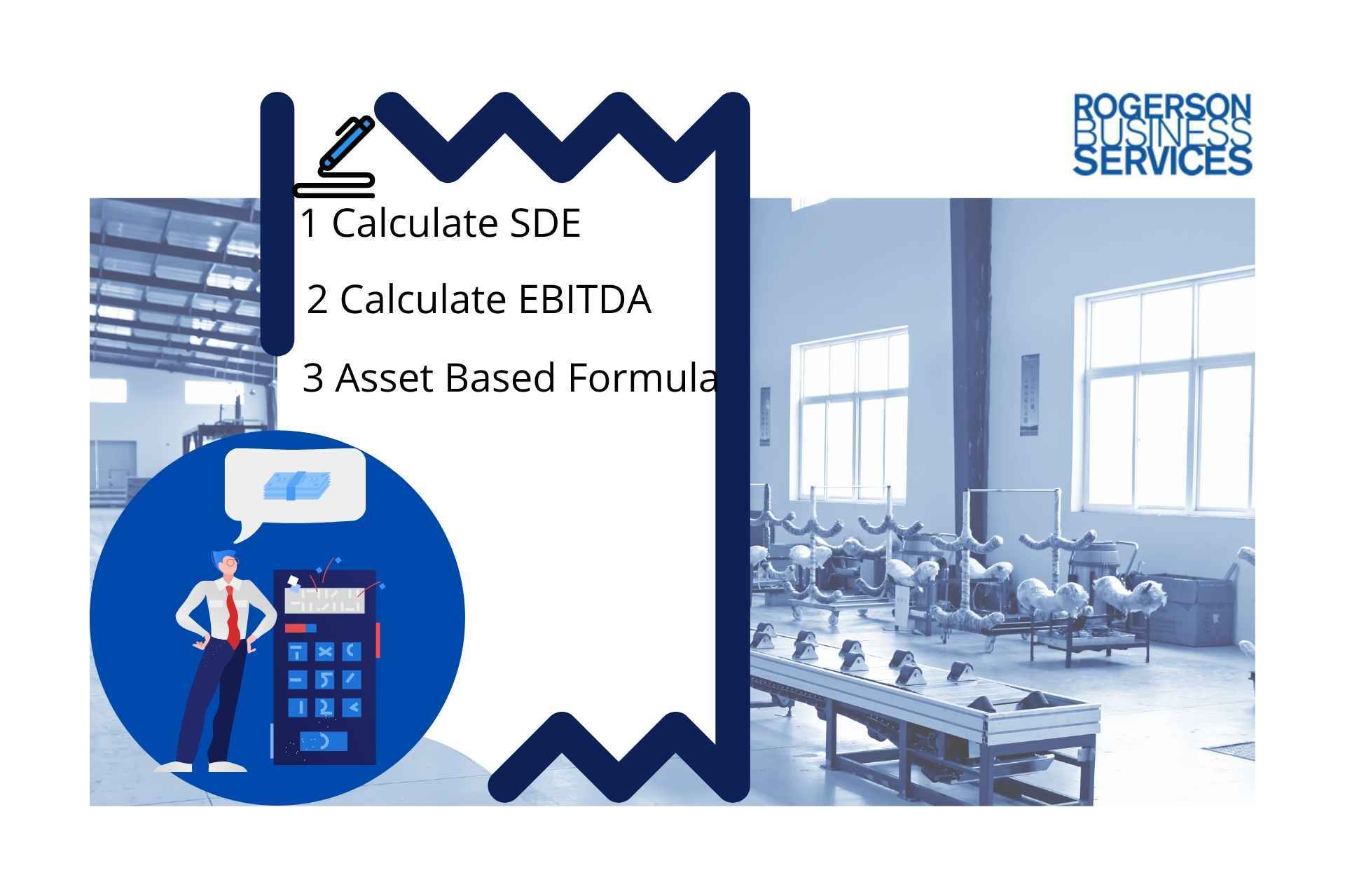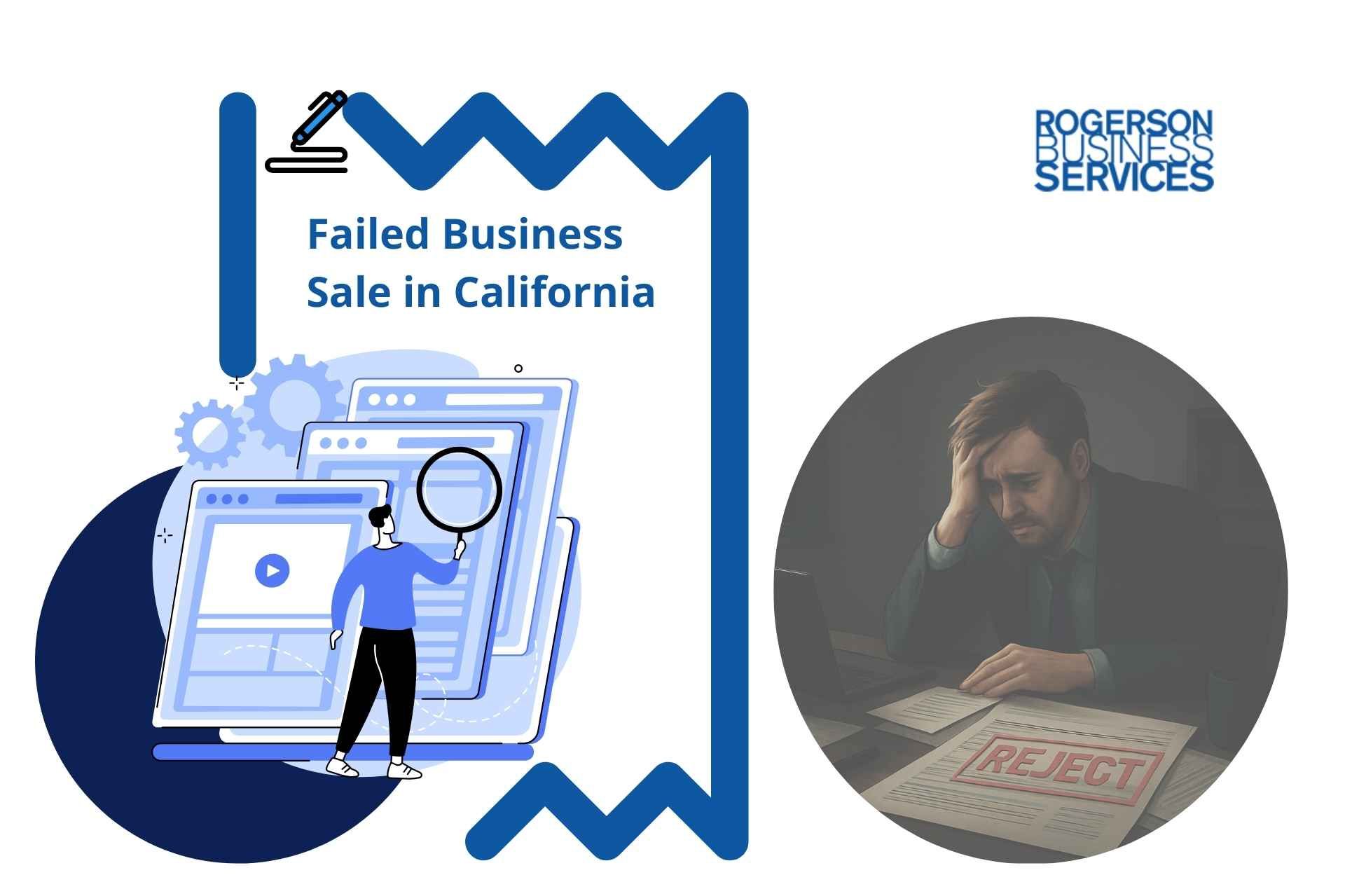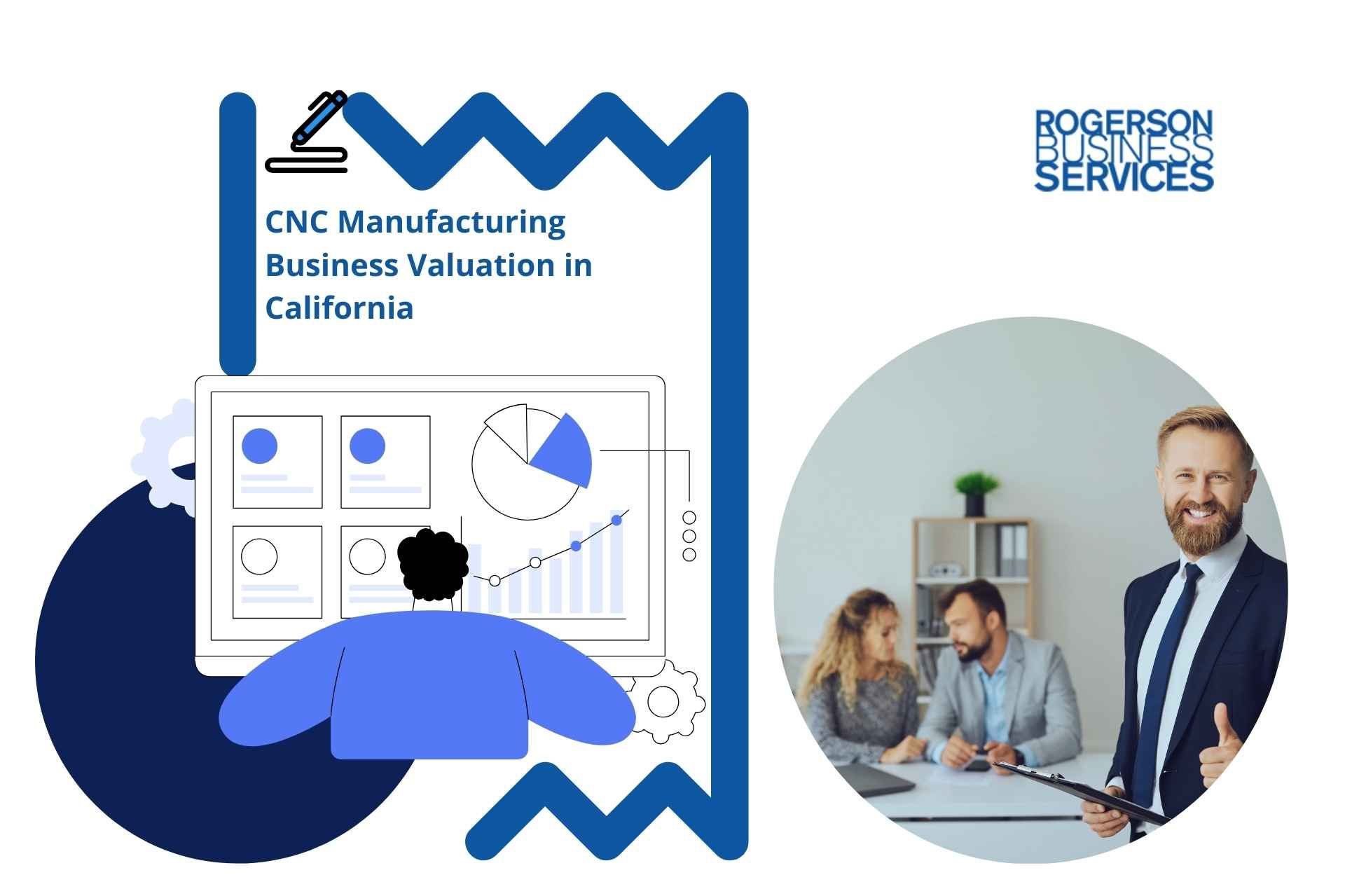Best Calculations for Valuing a Manufacturing Business in California
Calculating and Valuing a Manufacturing Business
- Step One: Calculate SDE
- Step Two: Calculate EBITDA
- Step Three: Asset Based Formula

The first step to take when selling a manufacturing company is learning how to calculate business valuation to determine your company’s worth. Below you can find more information on how to calculate business valuation.
How to Calculate Business Valuation
Calculating the valuation of your manufacturing business is a complicated process. If you are not a financial expert, you might end up undervaluing your company and losing money on the sale.
As such, we recommend you
contact a professional
advisor to determine your company’s value before selling.
A
Broker’s Price Opinion
involves
hiring a manufacturing business broker
or a licensed business M&A advisor to evaluate the value of your company.
The broker or advisor will then use the valuation to determine your business’s Most Probable Selling Price (MPSP).
Brokers use
three
business
valuation approaches
to calculate company worth: the Income Approach, the Market Approach, and the Asset-Based Approach.
- The Income Approach: In this approach, the value of the business comes from projections of future earnings and profits. You can calculate these projections by looking at the company’s past and the present value of its cash flows and adjusting them to fit the changes in growth rates or tax rates.
- The Market Approach: Here, you can determine the company value by comparing valuation transactions of similar companies or business situations. You take the resulting valuation price as the multiple of the benchmark of the other prices.
- The Asset-Based Approach: In this approach, you determine the business value by finding the total value of all the assets in the company. You then calculate the valuation by evaluating the market value of the assets minus the liabilities.
Among the three business valuation approaches, the
asset-based approach valuation
is the most suitable approach for a manufacturing business valuation because it calculates the exact value of the company.
Also, unlike the other approaches, the asset approach valuation can determine the valuation of businesses facing liquidity challenges.
Here are the steps you should follow when determining the value of your manufacturing company using the asset-based approach:
Step One: Calculate the SDE or the EBITDA Business Valuation
Before calculating your company’s value, you must first determine the SDE or the EBITDA of the business. The EBITDA and SDE are tools that standardize the earnings of the company before selling.
EBITDA
stands for
Earnings
Before
Interest
Taxes
Depreciation and
Amortization. It standardizes the company’s value by adding the interest, taxes, depreciation, and amortization expenses to the net income earnings.
You can find EBITDA by using the formula below:
EBITDA = Net Income + Interest Expense +Depreciation Expense + Amortization Expense + Taxes.
SDE, on the other hand, stands for
Seller’s Discretionary Earnings.
It is used to standardize the business value by adding the business owner’s discretionary earnings to the net earnings.
These discretionary earnings are unique money-spending decisions that the previous business owner made and are not entirely the decisions the new owner will make. They include things like the business owner’s salary, travel and entertainment expenses, and research periodicals.
Find the
SDE
using the formula below:
SDE = Net Income Earnings + Discretionary Earnings.
Step Two: Calculate the Value of Your Company Using Asset-Based Approach Valuation
When calculating the company’s value using the asset-based approach, the manufacturing business broker evaluates the total value of assets and liabilities. Assets, in this case, can be tangible or intangible assets.
Tangible assets include items like real estate, furniture, and cash, while intangible assets include goodwill, copyrights, trademarks, and patents.
After determining the total value of all the assets and liabilities, calculate the company’s value by deducting the liabilities from the assets.
One major setback of calculating asset-based value is determining the value of intangible assets. While you can find the value of tangible assets on company books, the value of some of the intangible assets is not.
Because of this, the value of the net assets is adjusted to get the correct value of the company.
Learn more about the asset based approach in calculating a manufacturing business worth. Click here.
Asset-Based Method Formula
In the asset-based approach, the evaluation process includes calculating the value of the assets that the business has recorded in its company books. The most straightforward formula is to subtract the value of the liabilities from that of the assets.
However, most of the time, the value of the assets minus the liabilities can differ from the values reported on the balance sheet. This difference can be attributed to two factors – difficulty in determining the value of intangible assets and timing.
While there is a number in the balance sheet that will tell you the value of a tangible item like real estate, no number can place a value on an intangible item, like a company's branding.
Therefore, this makes it difficult to determine the value of some of the intangible items and can lead to an incorrect business evaluation.
Also, the value of some intangible assets like trade secrets and trademarks can change depending on timing.
Because of these two factors, the company's net asset value is adjusted to determine the correct value of the company.
Now, with the adjusted asset-based valuation, instead of using the balance sheet values to determine the value of the assets, we use the market value of the assets in the current environment.
The market value of the assets is adjusted to fit everything that the company could potentially sell for. This includes not only intangible assets like trade secrets and copyrights but also the liabilities that will be subtracted from these assets.
Valuing a Manufacturing Business
Valuing a manufacturing business is no easy task, especially for the business owner. Arming yourself with the best approach, hiring a manufacturing business broker, and considering the factors to increase value are all great ways to stay on top.
For a manufacturing business, the asset-based approach is the best approach you can use to determine company value. Apart from determining the exact value of the company, the asset-based approach is also the best method when a business is facing liquidation issues.
If you are a retiring business owner looking to exit your lower middle market manufacturer in California, here are six tips to get you started:
1. Don't wait until the last minute to start planning your exit. The process of selling a lower middle market manufacturing business can take a long time, so it's important to start early.
2. Have a clear idea of what you want to get out of the sale. Know your goals and what you're willing to negotiate.
3. Know what's your company's worth. This is an essential step to take when planning to sell your manufacturing business in California.
4. Choose the right type of buyer. Not all buyers are created equal, so do your research and find the right one for your business.
5. Be prepared for a lot of due diligence. M&A buy-side due diligence is when buyers will want to know everything about your business, so be ready to provide documentation and answer questions.
6. Be flexible with the terms and conditions of the deal. It's important to be open to negotiation to get the best possible deal for your business.
Rogerson Business Services, also known as, California's lower middle market business broker is a sell-side M&A advisory firm that has closed hundreds of lower middle-market deals in California. We are dedicated to helping our clients maximize value and achieve their desired outcomes.
We have a deep understanding of the Californian market and an extensive network of buyers, which allows us to get the best possible price for our clients. We also provide comprehensive support throughout the entire process, from initial valuation to post-closing integration.
Our hands-on approach and commitment to our client's success set us apart from other firms in the industry. If you consider selling your lower middle market manufacturing business, we would be honored to help you navigate the process and realize your goals.
If you have decided to value and then sell your lower middle market manufacturing company or still not ready, get started here, or call toll-free 1-844-414-9600 and leave a voice message with your question and get it answered within 24 hours. The deal team is spearheaded by Andrew Rogerson, Certified M&A Advisor, he will personally review and understand your pain point/s and prioritize your inquiry with Rogerson Business Services, RBS Advisor.
Go to the next article: Part of tips to selling manufacturing business in California series ->
Hey there! Can we send you a gift?
We just wanted to say hi and thanks for stopping by our little corner of the web. :) we'd love to offer you a cup of coffee/tea, but, alas, this is the Internet.
However, we think you'll love our email newsletter about building value and properly position your company before transition/exit your business ownership.
As a special welcome gift for subscribing, you'll also get our helping and educational guides, tips, tutorials, etc.. for free.
It's filled with the best practices for retiring serial business owners like Dan Gilbert, Larry Ellison, Warren Buffett, and many more.
Just sign up for our emails below.


